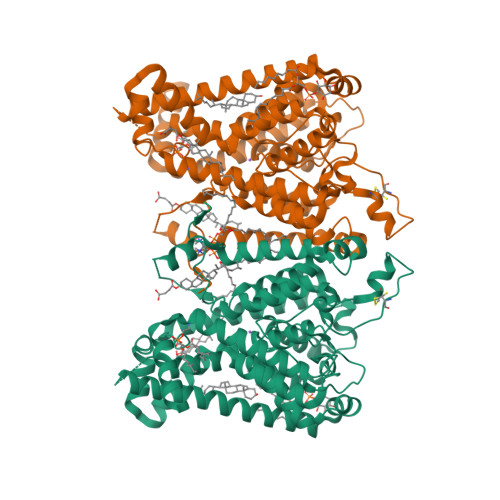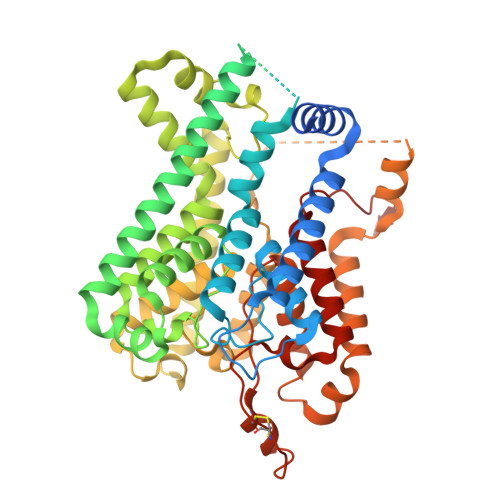Structural insights into ion selectivity and transport mechanisms of Oryza sativa HKT2;1 and HKT2;2/1 transporters.
Wang, X., Shen, X., Qu, Y., Zhang, H., Wang, C., Yang, F., Shen, H.(2024) Nat Plants 10: 633-644
- PubMed: 38570642
- DOI: https://doi.org/10.1038/s41477-024-01665-4
- Primary Citation of Related Structures:
8K66, 8K69 - PubMed Abstract:
Plant high-affinity K + transporters (HKTs) play a pivotal role in maintaining the balance of Na + and K + ions in plants, thereby influencing plant growth under K + -depleted conditions and enhancing tolerance to salinity stress. Here we report the cryo-electron microscopy structures of Oryza sativa HKT2;1 and HKT2;2/1 at overall resolutions of 2.5 Å and 2.3 Å, respectively. Both transporters adopt a dimeric assembly, with each protomer enclosing an ion permeation pathway. Comparison between the selectivity filters of the two transporters reveals the critical roles of Ser88/Gly88 and Val243/Gly243 in determining ion selectivity. A constriction site along the ion permeation pathway is identified, consisting of Glu114, Asn273, Pro392, Pro393, Arg525, Lys517 and the carboxy-terminal Trp530 from the neighbouring protomer. The linker between domains II and III adopts a stable loop structure oriented towards the constriction site, potentially participating in the gating process. Electrophysiological recordings, yeast complementation assays and molecular dynamics simulations corroborate the functional importance of these structural features. Our findings provide crucial insights into the ion selectivity and transport mechanisms of plant HKTs, offering valuable structural templates for developing new salinity-tolerant cultivars and strategies to increase crop yields.
Organizational Affiliation:
Zhejiang Key Laboratory of Structural Biology, School of Life Sciences, Westlake University, Hangzhou, China.
























